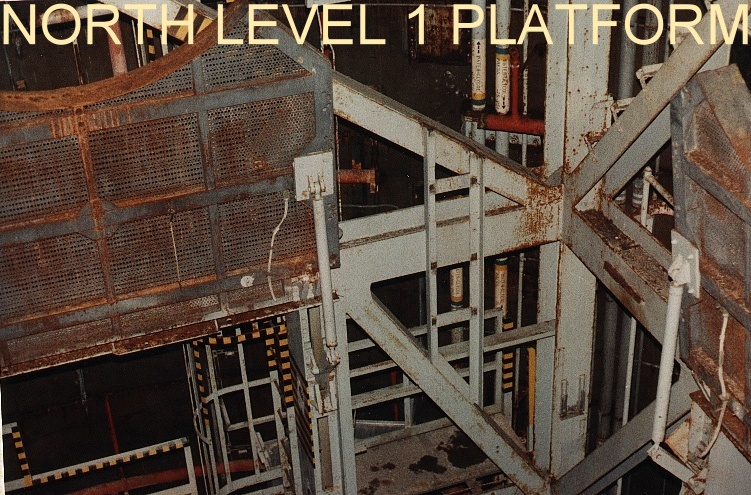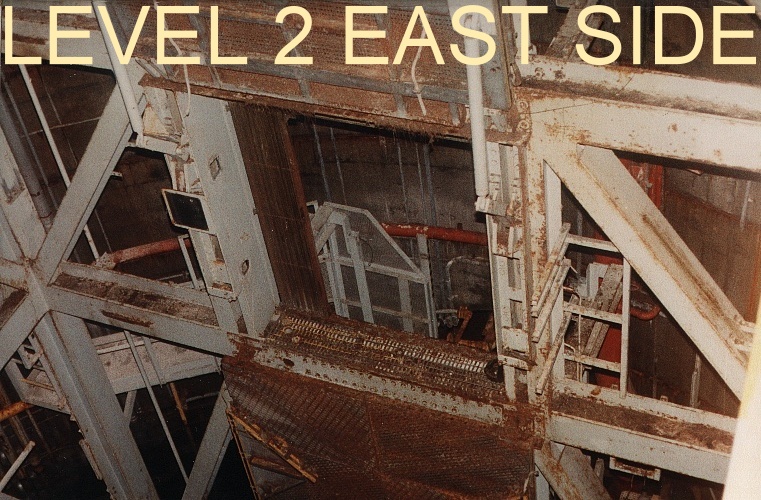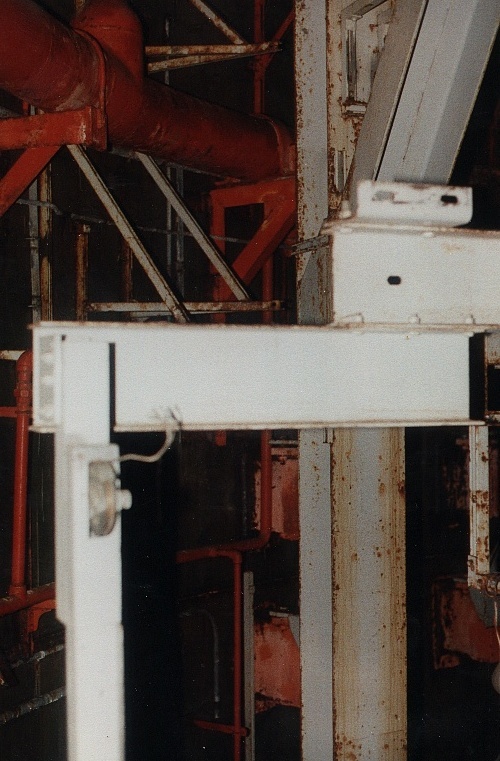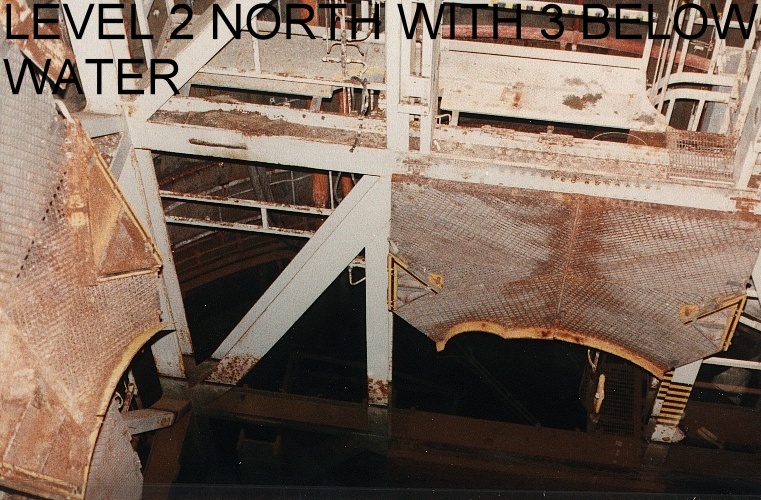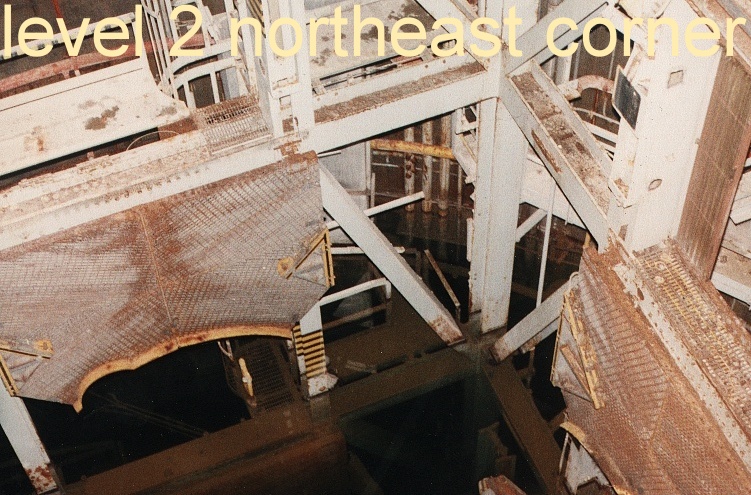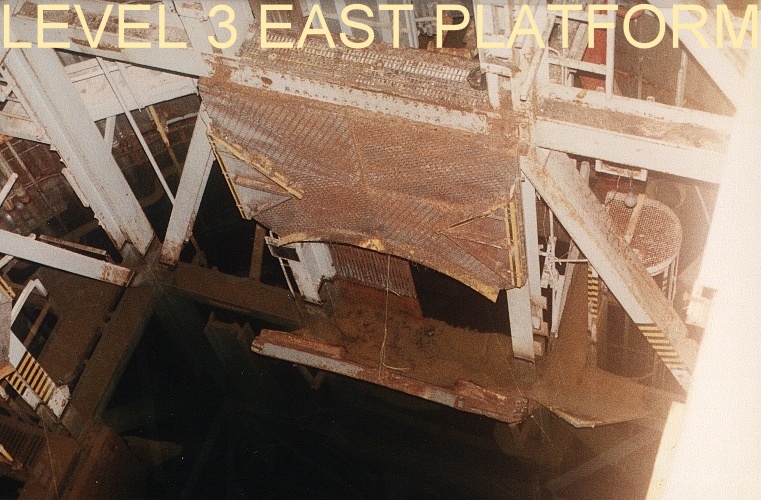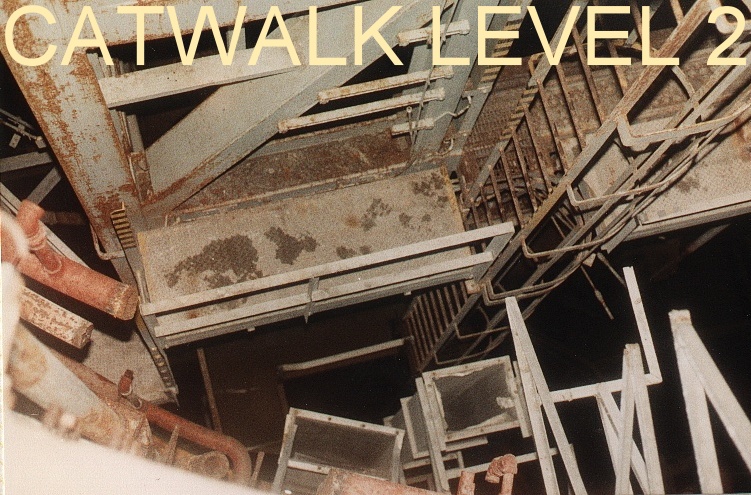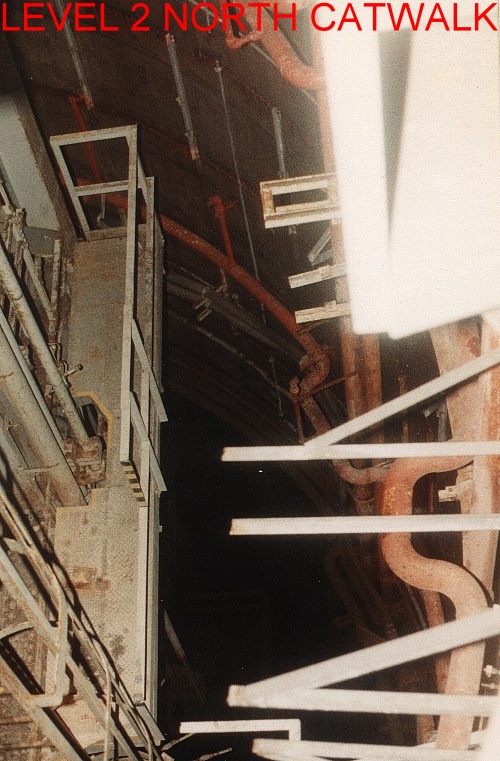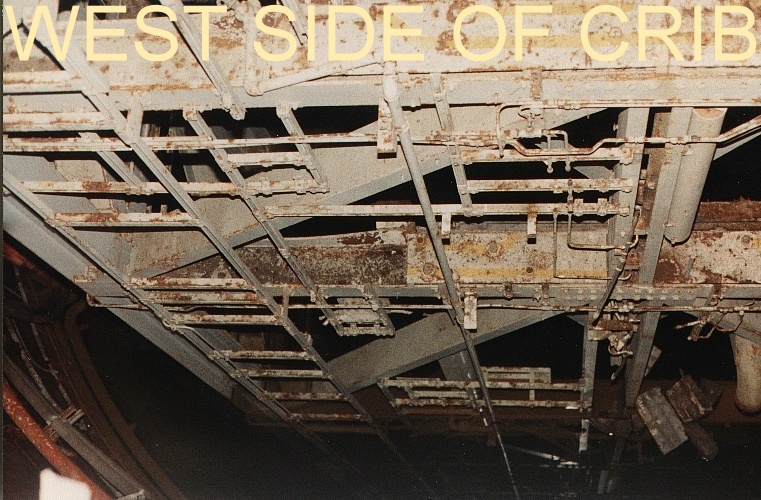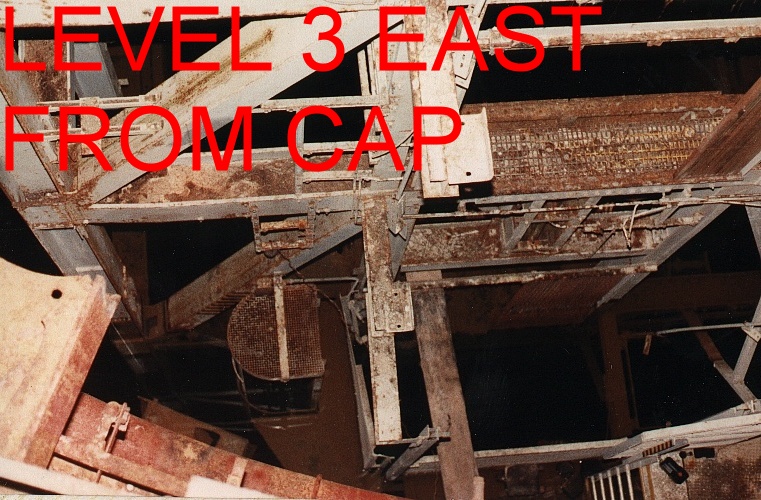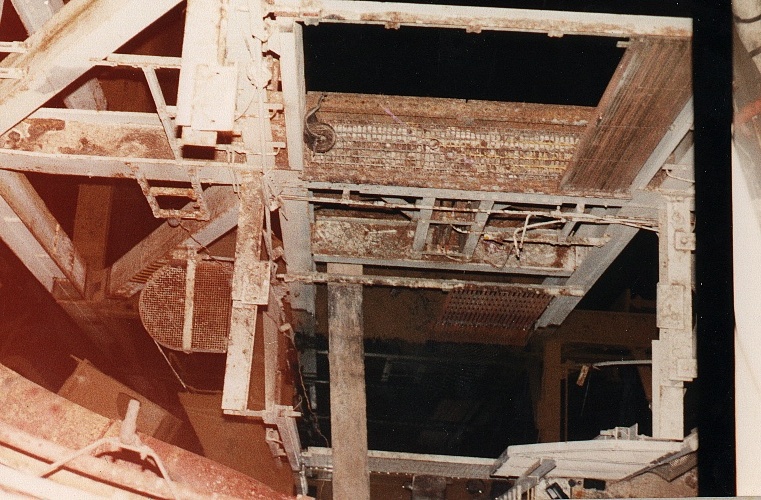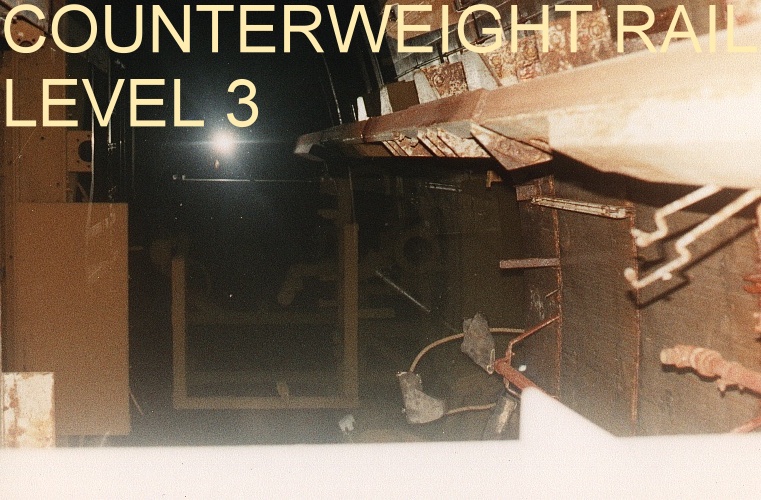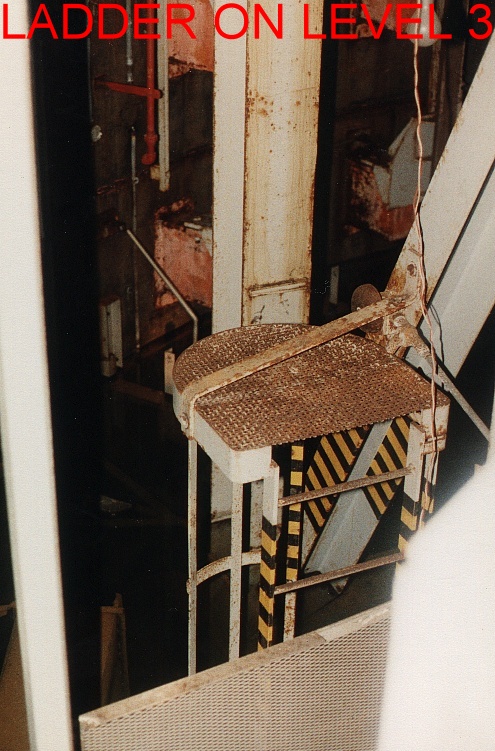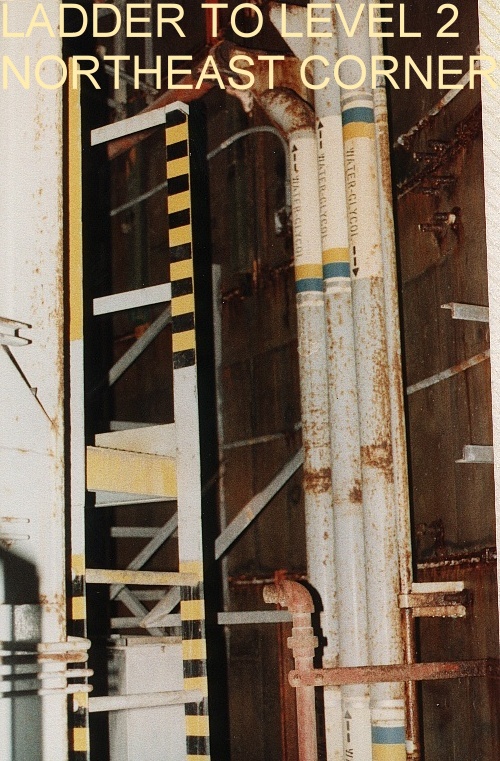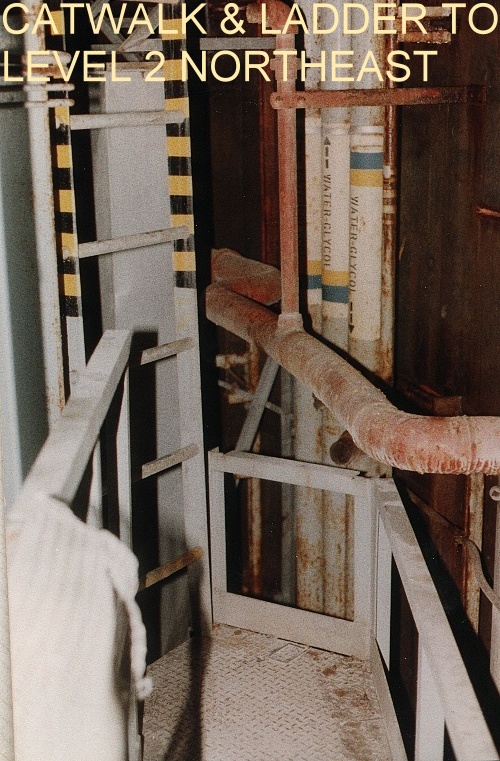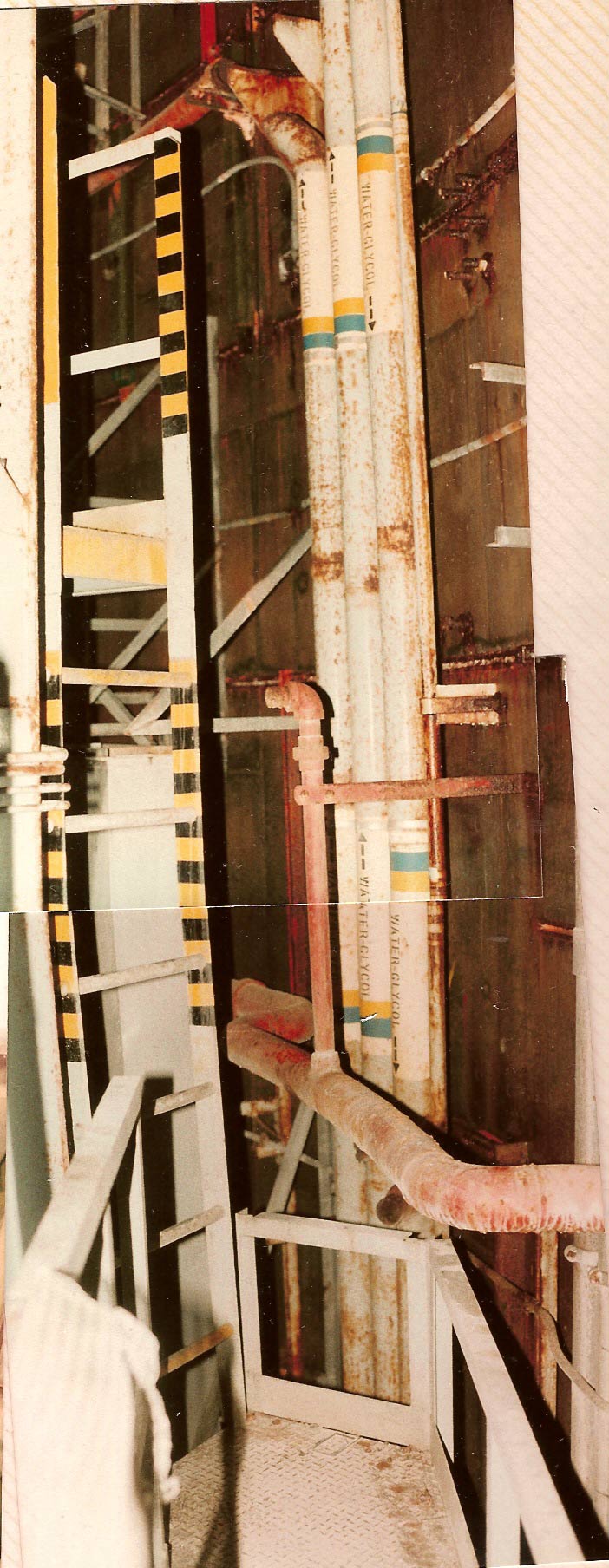The
Crib Structure Continued Yet Further
PLEASE
NOTE: Many images in this section are very high resolution
and may take a while to load. The images are much larger than
they are displayed here, so if you save and view them you can see
them at full resolution. Please be patient and enjoy the
details.
In
this section we descend even further along the cribwork's maintenance
levels and get a broader view of the cribwork from the silo cap
perspective as we approach the deepest accessible depths of the Titan
I complex. Sadly, since the silos are flooded to varying depths,
one cannot get a look at the very bottom of the silos-- or can
we?
|
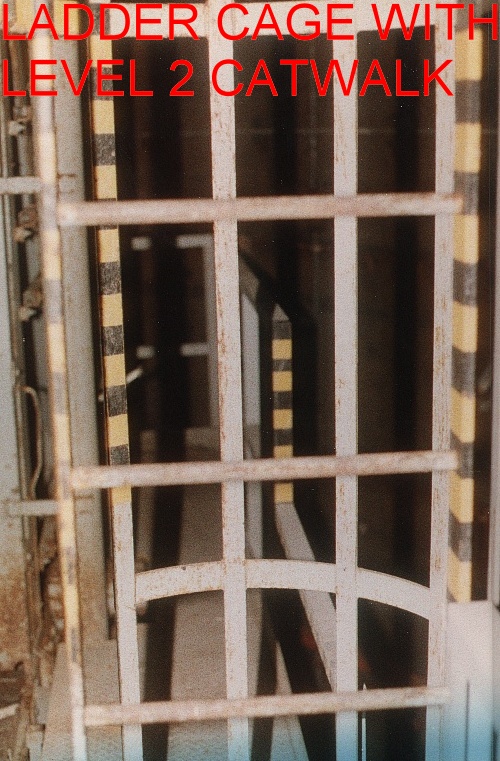
While
all the sites had personnel elevators to service the maintenance levels
in the silos, only the Vandenberg site had spiral stairways to move
between levels. If you worked at one of the operational sites and
the elevator was in use or not available, you had to schlep up and down
these ladders instead!
|
Descending to level 2 you
can see the extent to which this particular site was flooded.
Some fun facts to bring a bit of perspective here:
| Depth of the Titan I silos: |
150 feet |
| Diameter of silos: |
40 feet |
| Volume of empty silo: |
188,496 cubic feet (rounded to nearest unit) |
| Estimated depth of water in photo below: |
Approx. 80 feet |
| Volume of flood water in silo at 80 feet deep: |
752,024 gallons (rounded to nearest unit) |
| Weight of 1 gallon of fresh water: |
8.345 pounds |
| Approx.
weight of 80 feet of water in the silo: |
6,275,639
pounds or 3,137.82 tons |
| Time
to sump silo using 116 gal/minute pump:* |
Approx.
108 hours or 4.5 days |
*Assuming
a flood depth of 80 feet.
For
those out there who may already own a silo or those who would love
nothing more than to buy an old missile complex and clean it up and
restore or renovate it, this is a taste of what you might encounter
while working on a Cold War "fixer upper".
Dewatering
a silo would also require the use of an expensive commercial sump
system capable of lifting water from 150 feet down-- far more than
most pumps can handle. The breed of pump that can handle this
job is generally used for sumping out mines and construction
sites. While such a pump can certainly be sourced and purchased,
it would likely be best (and cheaper) to hire someone experienced to
handle the job.
I
don't want to sound like I'm trying to discourage anyone from trying
to fix up a site, far from it, just be prepared to run up against some
solid challenges when it comes to reclaiming some areas.
Heading
down toward level 2 things start to get a little more damp....
|
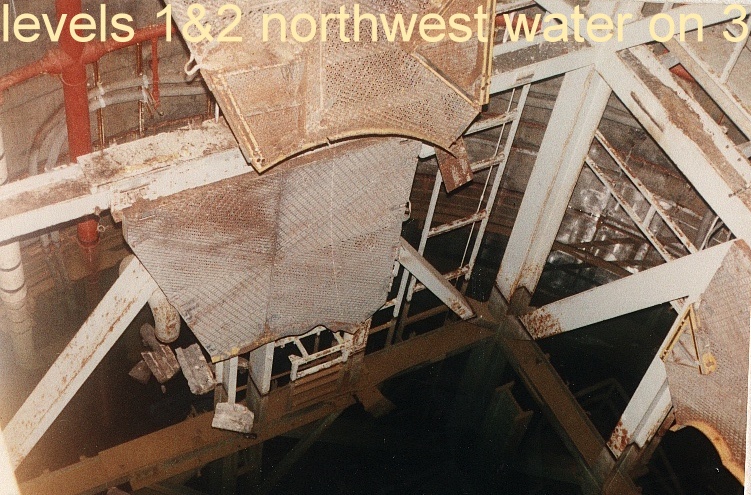
As
you can see here, there is not much further one can go before they hit
water
|
This
next group of photos give a good look at the outside faces of the crib
structure and some of the catwalks that run about on the levels still
above the water.
|
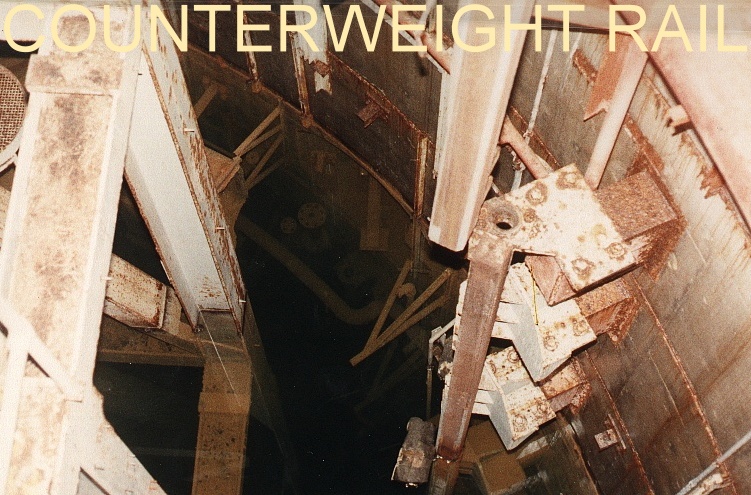
How
do you break something as stout as the counterweight rail? I
imagine a large, heavy object being lifted from the silo by a crane with
just enough freedom to swing into the rail as it passed. Quite
probably it was one of the counterweights themselves that inflicted that
damage I suspect.
|
|
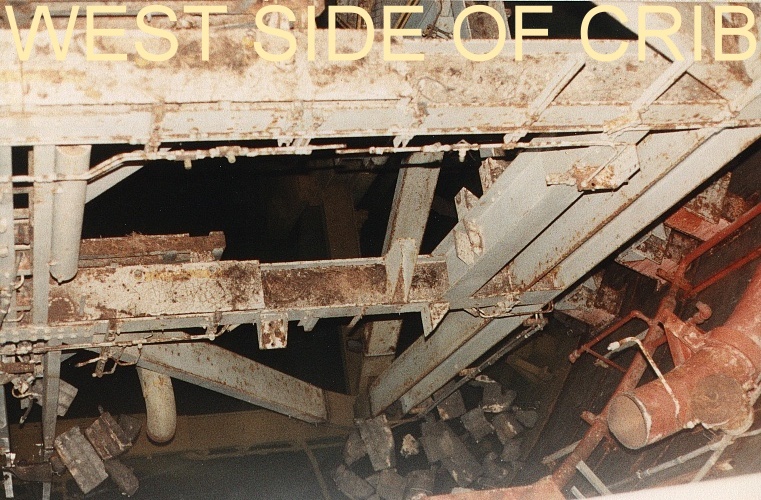
The
floating debris is soggy fiberglass pipe insulation
|
|
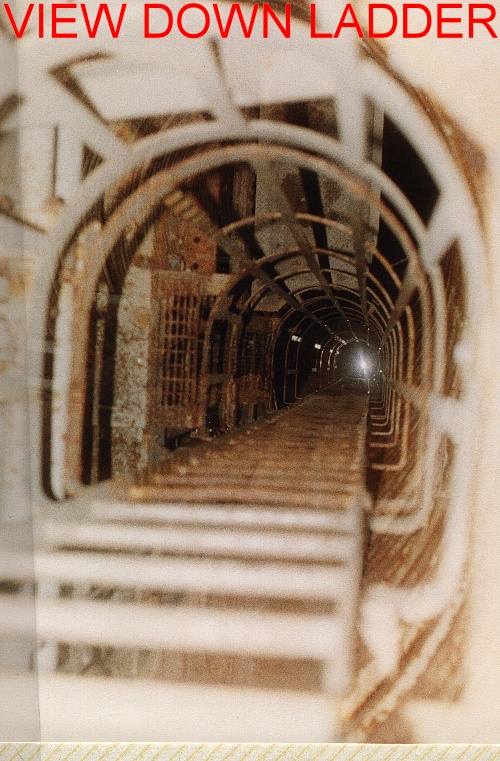
Now
where have I seen this before?
|
|
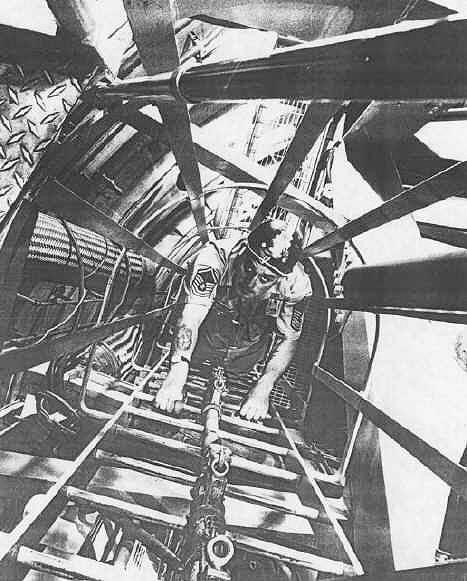
This
is not the exact same ladder as above which is also missing the safety
line and a Sergeant, but it shows how things used to look.
|
|
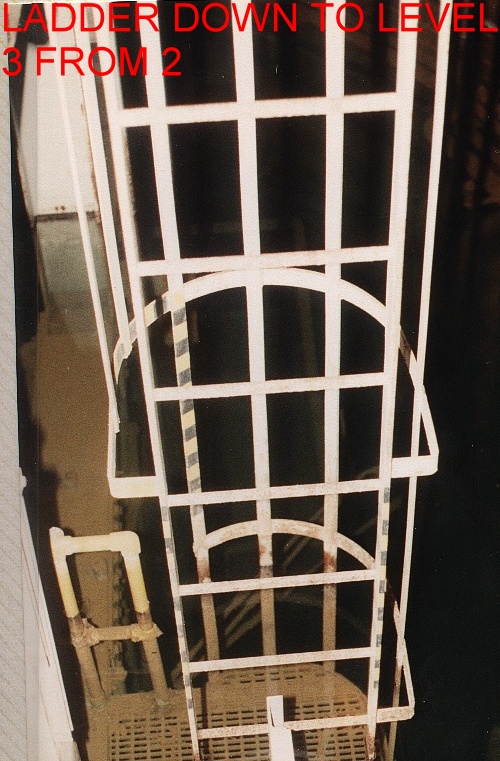
From
here on, the going gets really tough
|
More
cribwork to come in the next and final installment of the Missile Silo
sections.
Missile
Silos Part IX

|
Contact
| Site Map | Links |
Hosted by
InfoBunker



